The typical model of industrial scale power generation in the American west exports the impacts of production to rural landscapes and delivers power to users through transmission lines. Local power generation demands inventive clean sources of energy, visual and environmental sensitivity, and multiple benefits for communities.
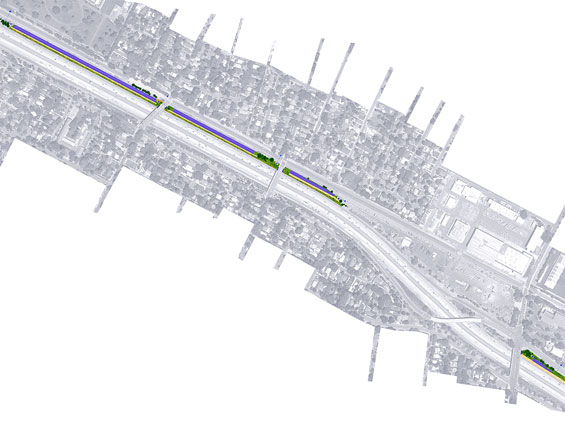
Bionic was commissioned by Republic Solar Highways LLC to design distinct solar arrays for the Cal Trans freeway right of way in Sacramento, California. The right of way sites present numerous challenges; they are south facing, hot, dry, isolated, narrow, and steep. They are adjacent to rail corridors and are highly visible. As a result, the right of way holds great potential for expressing a new era of local power generation. This design leverages the limitations and site conditions to create truly unique installations that make a positive contribution to the public realm, ecology, and community pride.
The right of way consists of two conditions: interchange embankments and cut banks. Free of cars and people, these spaces act as de facto urban wildlife corridors. This project values ecological and educational opportunities as additional functionality to otherwise single function solar power facilities on these spaces.
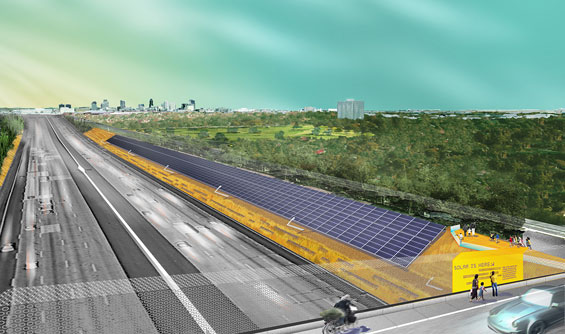
INTERCHANGE EMBANKMENT SITES
For the interchange embankment sites, Bionic observed a resident California Quail population on the site despite suboptimal habitat conditions. The California Quail is a native ground bird that prefers to move by foot. Small and camouflaged, their habitats in urban areas are often unintentionally destroyed by development. Successful populations of quail require a range of modest conditions and activities. Grasses and flowers for feeding, patches of broadleaf plants for nesting, shrubs for cover, bare ground for dust baths, and oak trees for nuts and roosting at night. With constant car activity the site also provides additional protection from predators such as cats.
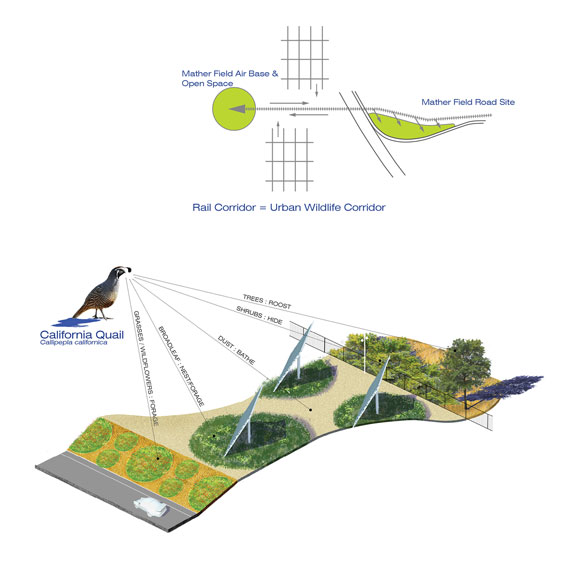
Bionic correlated the space and technical requirements of the solar units with the habitat and nesting requirements of the Quail. Varied habitat patches are integrated into the interchange embankment installation of 24 concentrated photovoltaic (CPV) units with dual axis sun tracking technology. Laser based motion sensor and surveillance equipment eliminated the typical requirement for a perimeter fence allowing free movement for the quail along an adjacent rail corridor. The resulting site plan created optimized conditions for resident quail habitat and secure high performance local power generation.
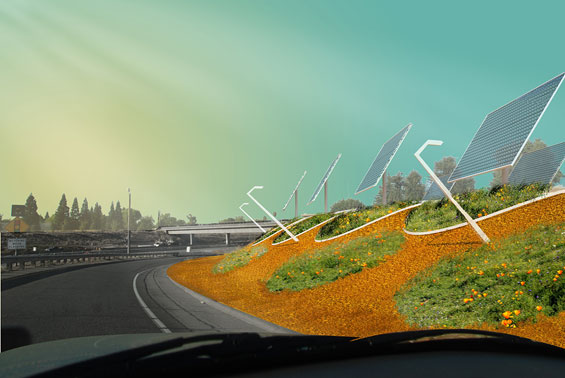
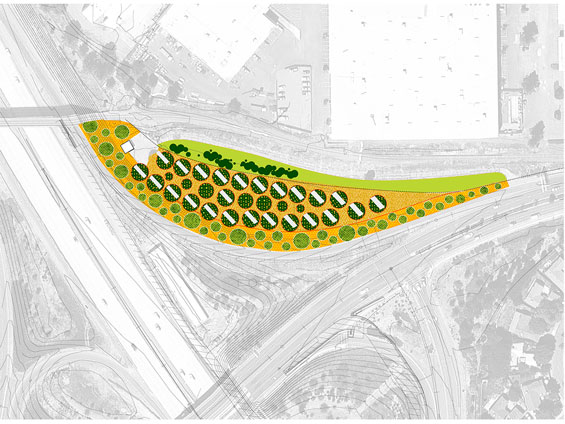
CUT BANK SITES
For the cut bank sites, a 1.5 Megawatt fixed panel Solar Array was planned along a continuous 2-mile right of way. The installation creates a striking linear composition intended to be experienced at high speeds from a moving vehicle or above on an overpass. The bank has three distinct conditions- top of bank along the rail corridor, the upper bank, and the lower bank. The panels are located on the upper bank. Crushed rock line the bank surface under the panels for weed and erosion control, and fire protection. Native grasses and wildflowers that attract pollinator species and butterflies line the lower bank. The top of bank incorporates pollinator and butterfly attracting shrubs to obscure the fence and deter casual access.
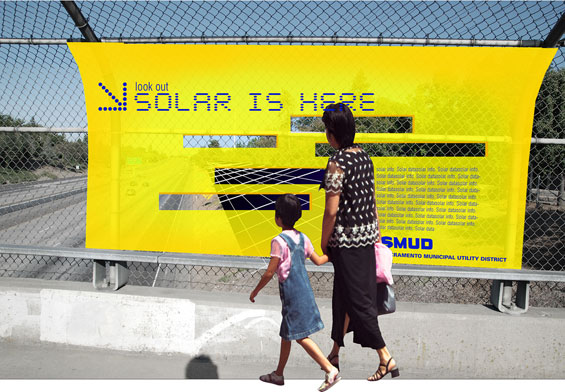
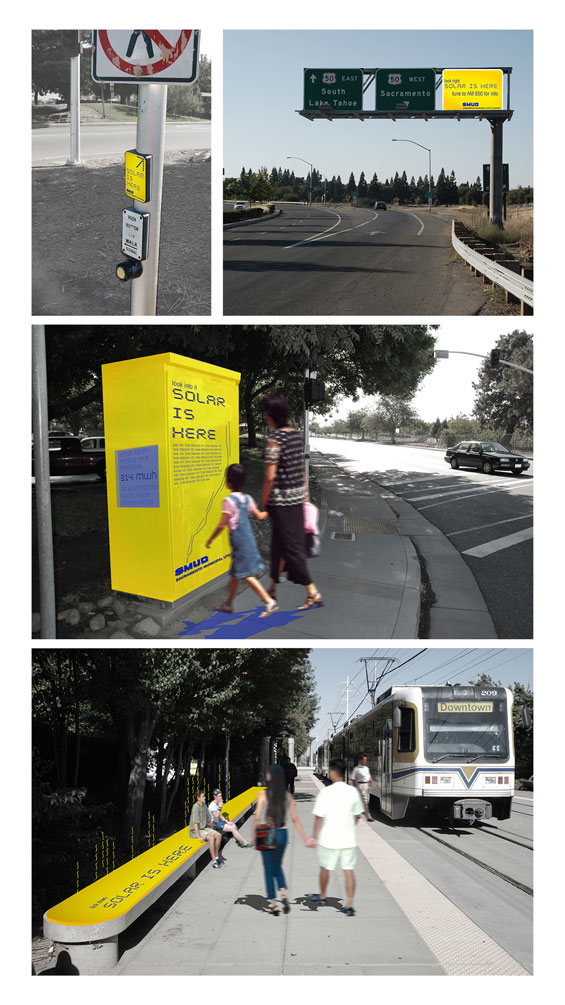
BRANDING & COMMUNICATIONS
The visual composition of the solar landscape is reinforced by a robust public communications and information system that expresses the significance and benefits of local power generation through different media and experiences for pedestrians and motorists. The branding and communications strategy – “Solar Is Here” – was devised by Bionic as a sound bite for outward public relations or the visual continuity of proactive public information and education installations. The phrase “Solar Is Here” announces the new era and arrival of local renewable power generation in an urban context. The slogan and logo function at a variety of scales and media with the simple but powerful message that is adaptable and easily accessible. Like the installations themselves, the signage and devices for education and public information are worked into the interstitial spaces of the urban landscape but at the human scale. Overpasses, connection points, intersections, the rail station, and roadside signage are all opportunities to express that the presence of this valuable resource and landscape is finally here!
Sacramento Solar Highways | Sacramento USA | Bionic
Design Firm | Bionic
Year | 2012
Design Team | Marcel Wilson, principal, RLA, ASLA, Chris Rousseau, associate, LEED
Client | Republic Solar Highways

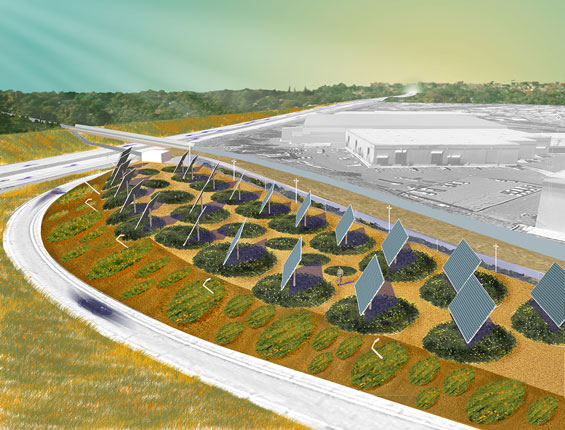
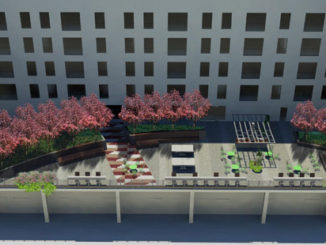

Comments are closed.